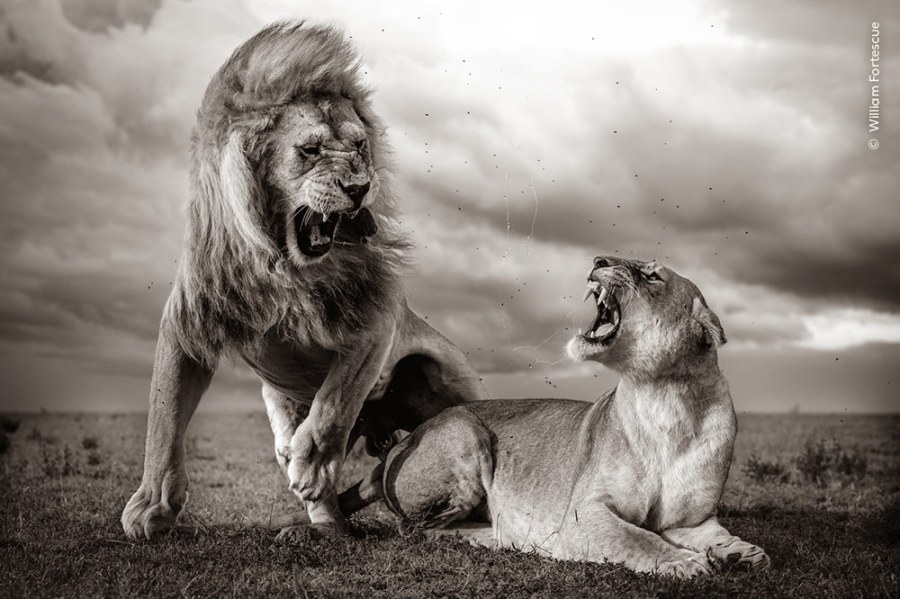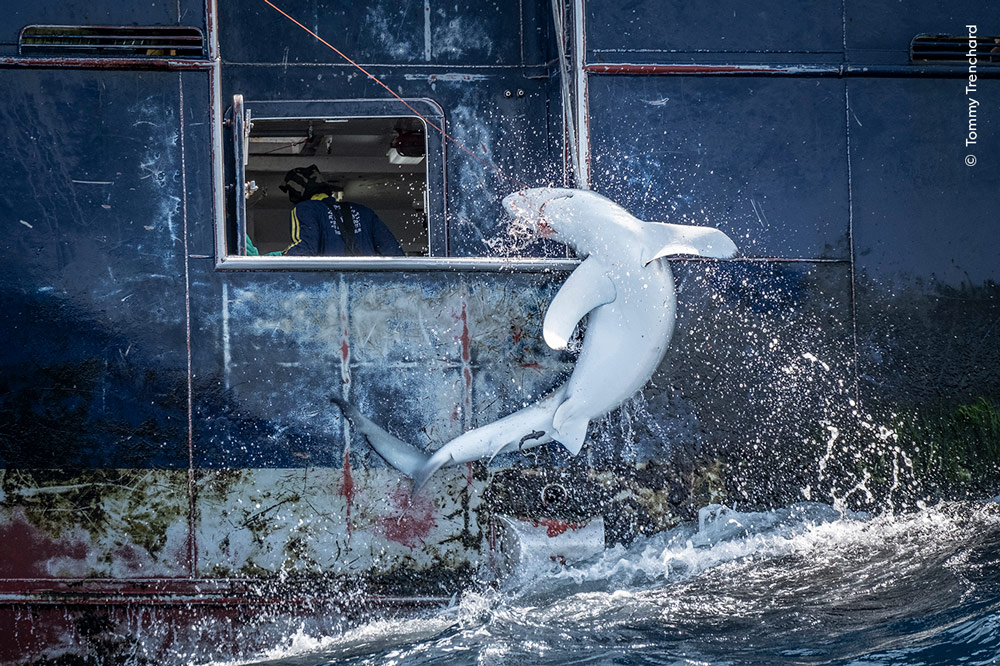The Wildlife Photographer of the Year competition is hugely prestigious, being organised by the Natural History Museum in London, and all serious wildlife photographers strive for one of its awards.
The Wildlife Photographer of the Year competition has today released a selection of Highly Commended winners in each of this year’s categories. Note that these are not the winning images in this year’s competition, but some great work has been honoured here, and we heartily congratulate the photographers involved. Just getting this far is a major achievement!
The overall winners of each category in this year’s Wildlife Photographer of the Year competition, plus the ‘biggies’ – the Grand Title and Young Grand Title awards – will be announced on October 8th at a ceremony hosted by TV presenters and conservationists Chris Packham and Megan McCubbin.
This year’s competition attracted a record-breaking 59,228 entries from 117 countries and territories. It is one of the biggest and best photography competitions to enter, and full details can be found here.
Enjoy the latest Wildlife Photographer of the Year Highly Commended images below
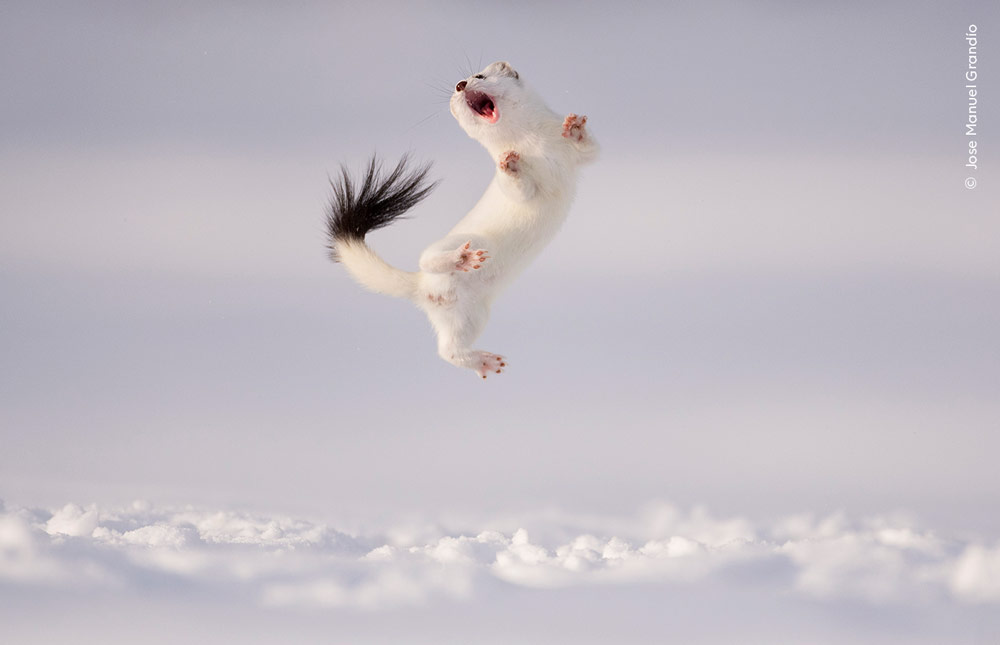
Twist and Jump by Jose Manuel Grandío, Spain – Highly Commended, Behaviour: Mammals
Winter is Jose’s favourite season for photography. When he spotted this stoat jumping mid-air on the last day of his trip, he saw this performance as an ‘expression of exuberance’ as the small mammal hurled itself about in a fresh fall of snow.
Scientists refer to this behaviour as dancing, although opinions are divided about what motivates it, from an attempt to confuse prey through to a parasitic infection. Stoats are usually active at night and prey on small mammals and birds.
Location: Athose, Bourgogne-Franche-Comté, France
Technical details: Nikon D500 + 500mm f4 lens; 1/6000 at f4; ISO 800

Centre of Attention by Georgina Steytler, Australia. Highly Commended, Behaviour: Invertebrates
Georgina has been studying these bees for a few years and knew she had to keep her distance. Lying on the hot, rocky, sun-baked ground with sand blowing in her face, her long lens enabled her to get the perfect image.
When female Dawson’s burrowing bees emerge in spring, they are surrounded by males competing to mate with them. After mating, the female bee will dig a new burrow filled with pollen and eggs, from which the hatched bees will emerge in spring.
Location: Near Carnarvon, Western Australia, Australia
Technical details: Nikon Z 8 + 800mm f6.3 lens + 1.4x teleconverter; 1/5000 at f11; ISO 640
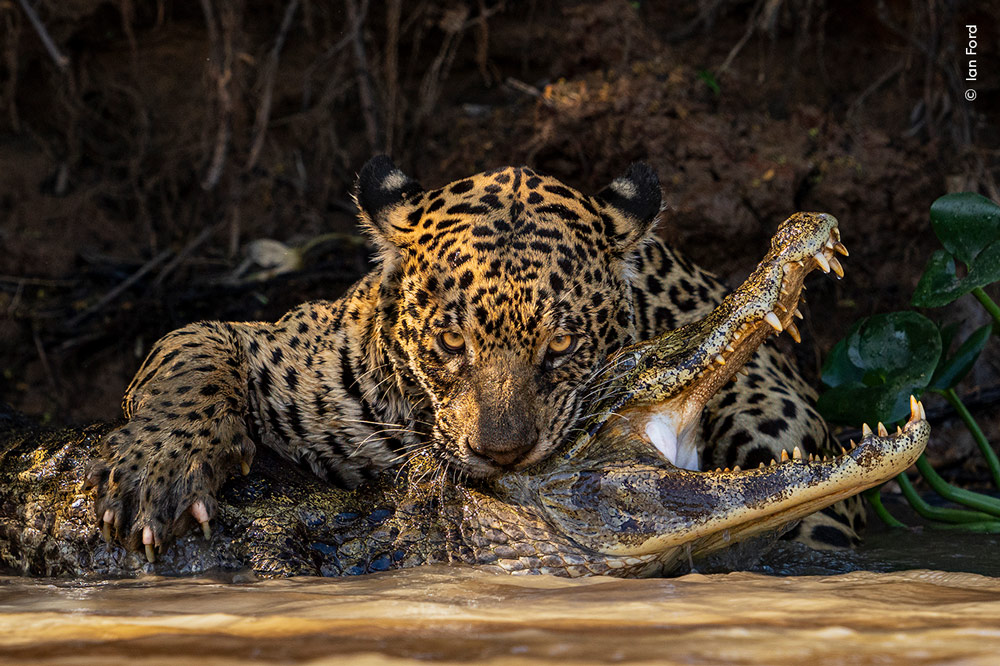
Deadly Bite by Ian Ford, UK. Highly Commended, Behaviour: Mammals
A call over the radio alerted Ian that a jaguar had been spotted prowling the banks of a São Lourenço River tributary. Kneeling in the boat, he was perfectly placed when the cat delivered the skull-crushing bite to the unsuspecting yacare caiman.
The South American Pantanal wetland supports the highest density of jaguars anywhere in the world. With prey being so abundant, there is no need to compete for food, and the usually solitary big cats have been seen fishing, travelling and playing together.
Location: Pantanal, Mato Grosso, Brazil
Technical details: Sony Alpha 1 + 400mm f2.8 lens; 1/800 at f4 (-1 e/v); ISO 400.
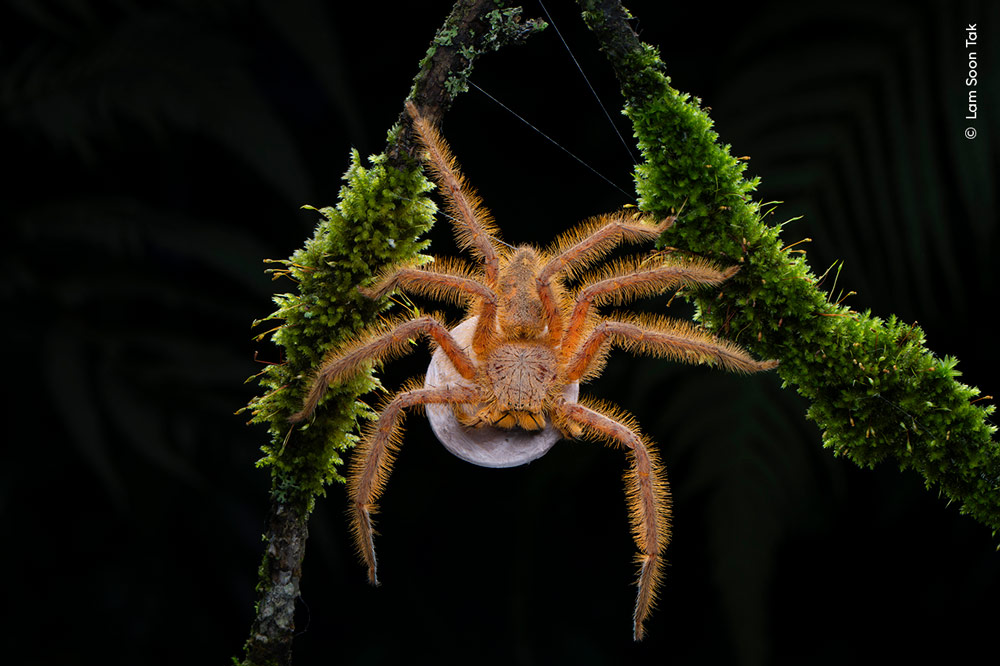
Ziggy Spider by Lam Soon Tak, Malaysia. Highly Commended, Behaviour: Invertebrates
Lam was exploring the highlands of Malaysia when he came across this spider. Perched on broken branches beside a river, the bright white disc of eggs in the spider’s jaws and its orange body stood out against the lush green moss.
Found in Malaysia, Singapore and the Indonesian island of Sumatra, this spider was named in 2008 by arachnologist and David Bowie fan, Dr Peter Jäger. He thought the striking markings up to the spider’s head region resembled the make-up worn by the singer during the 1970s.
Location: Cameron Highlands, Pahang, Malaysia
Technical details: Nikon Z 8 + 105mm f2.8 lens; 1/125 at f20; ISO 250; mul-tiple flashes + DIY diffusers.
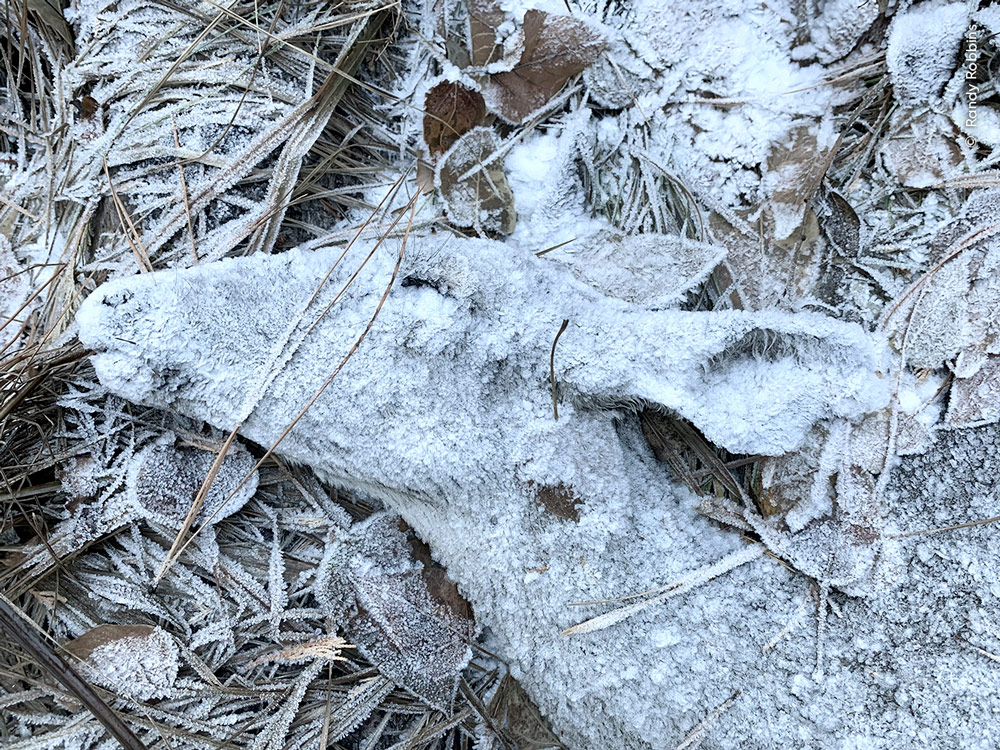
The Last Resting Place by Randy Robbins, USA. Highly Commended, Natural Artistry
On an early winter’s morning, Randy was checking the trail cameras near his home when he found the body of this deer. He photographed this poignant moment using his smartphone before the ice could melt.
This is the first time an image taken on a smartphone has been featured in the top 100 images chosen in the Wildlife Photography of the Year competition (and it was taken on an older iPhone too, further proof that you don’t need the very latest top of the range handsets).
Location: Near Susanville, California, USA
Technical details: Apple iPhone XR; 4.25mm built-in lens; 1/121 at f1.8
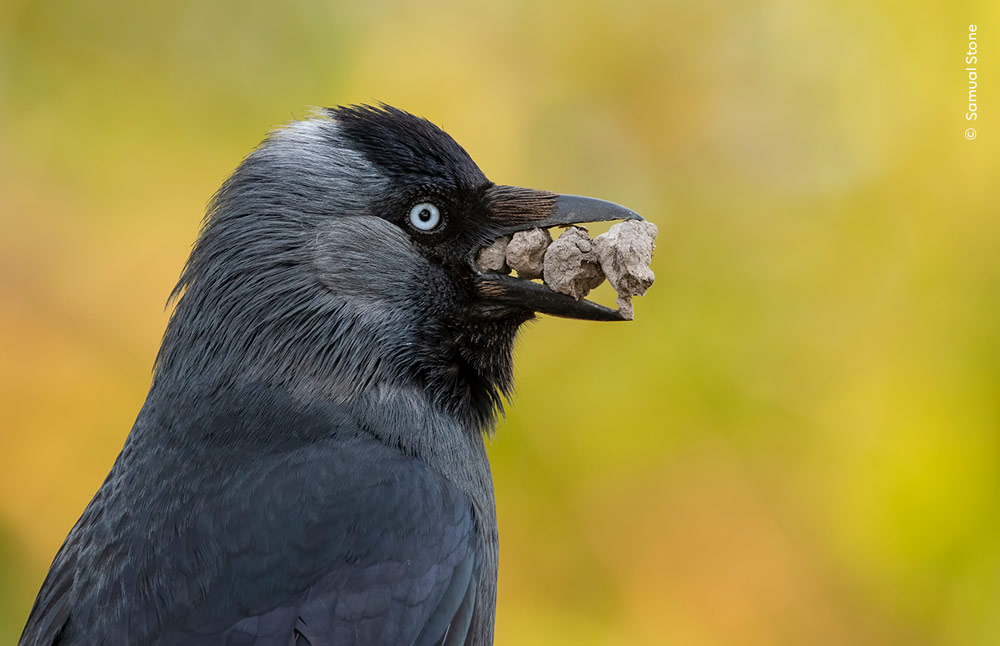
Precious Rocks by Samual Stone, UK. Highly Commended, Behaviour: Birds
Samual had been keeping an eye on the hole in the trunk of a half-fallen willow tree in London’s Bushy Park – he’d seen a pair of jackdaws visiting with their beaks full of hair taken from the coats of local deer.
Jackdaws are highly intelligent and adaptable. They build new nests each year, from all sorts of materials: twigs, branches, feathers, wool, moss, mud and animal dung. This pair kept adding rocks to theirs.
Location: Bushy Park, London, England, UK
Technical details: Nikon D5500 + Sigma 150–600mm f5-6.3 lens; 1/500 at f6.3; ISO 800
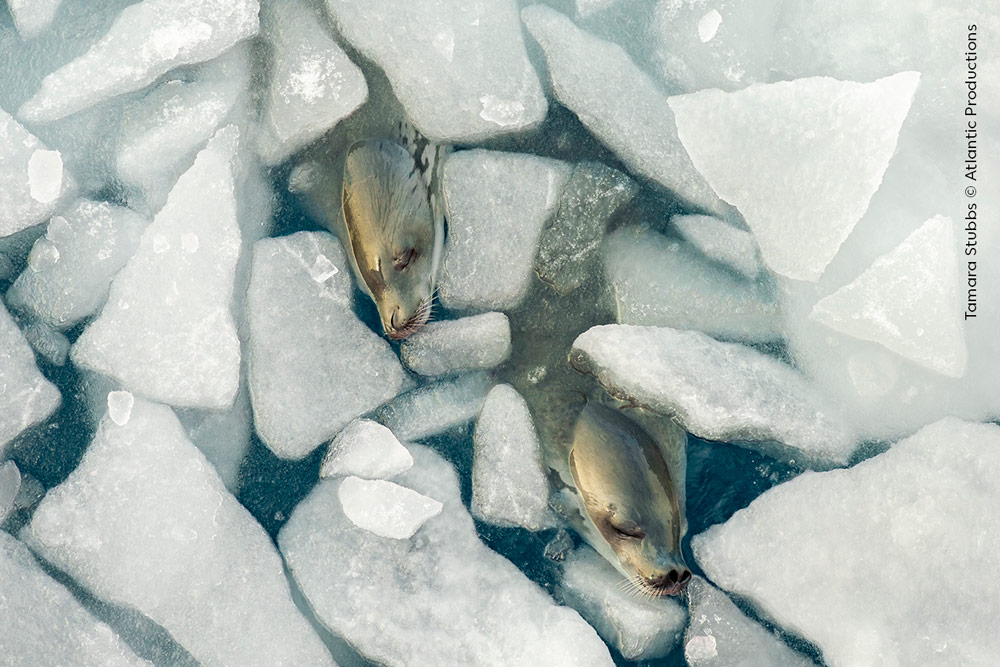
Going with the Floe by Tamara Stubbs, UK. Highly Commended, Animals in their Environment
In a standout moment on her nine-week expedition for Atlantic Productions in the Weddell Sea, Tamara noticed that seals had fallen asleep alongside the ship, with the tips of their nostrils at the water’s surface. These two had bobbed up so they could take a deeper breath.
There are around four million crabeater seals in the Antarctic. Although they are not considered endangered or under threat, the seals are protected by international conservation agreements. More research is needed to understand the impact of climate change and tourism on their populations.
Location: Weddell Sea, Antarctica
Technical details: Sony Alpha 7R II + Canon 24–70mm f2.8 lens at 70mm; 1/320 at f7.1; ISO 100; polarising filter
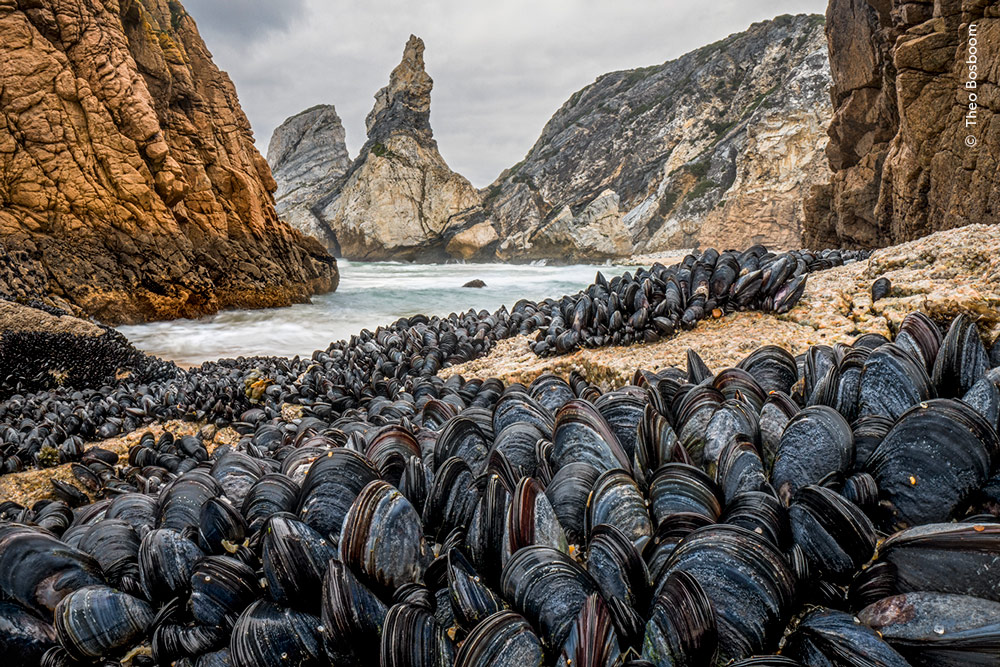
Strength in Numbers by Theo Bosboom, The Netherlands. Highly Commended, Animals in their Environment
Theo likes to take images of species that aren’t usually considered beautiful or important, to highlight their unappreciated significance. He took this image from above with a probe lens – a long, thin, macro wide-angle lens.
Mussels play an important role in creating dynamic ecosystems for other marine invertebrates such as crustaceans, worms and even small fish. They improve the water quality by filter-feeding, extracting plankton as well as bacteria and toxins, which prevents them from building up to dangerous levels.
Location: Praia da Ursa, Sintra, Portugal
Technical details: Canon EOS R5 + Laowa 24mm Periprobe lens; 0.6 sec at f32; ISO 200; focus stack of nine images.
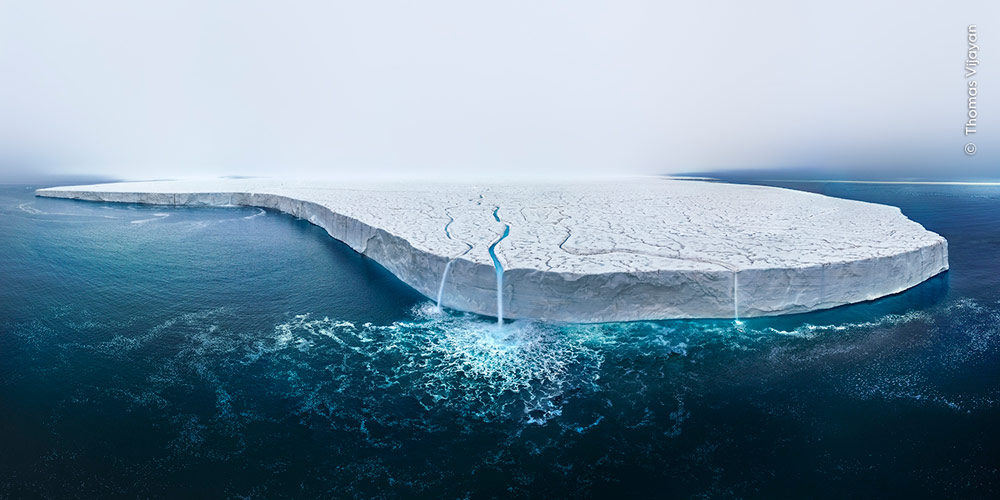
The Disappearing Ice Cap by Thomas Vijayan, Canada. Highly Commended, Oceans: The Bigger Picture
Encapsulating the magnificence of the Austfonna ice cap required meticulous planning and favourable weather conditions. Thomas’s image, a stitched panorama of 26 individual frames, provides a spectacular summer view of meltwater plunging over the edge of the Bråsvellbreen glacier.
The Bråsvellbreen glacier is part of Austfonna, Europe’s third largest ice cap. This dome of ice is one of several that covers the land area of the Svalbard archipelago. Some scientific models suggest that Svalbard’s glaciers could disappear completely within 400 years due to climate change.
Location: Svalbard, Norway
Technical details: DJI Mavic Mini 2 + 24mm f2.8 lens; 26 individual exposures
Hooked by Tommy Trenchard, South Africa. Highly Commended, Oceans: The Bigger Picture
Tommy was travelling on the Greenpeace ship Arctic Sunrise. The ship’s research expedition aimed to document the bycatch or accidental capture of sharks by fishing boats targeting tuna and swordfish, and to highlight the lack of effective regulation of industrial-scale fishing in international waters.
Approximately 80 million sharks are taken from the world’s oceans every year. Because of fishing, numbers of sharks worldwide have dropped since 1970. Three quarters of all shark species are now at risk of extinction.
Location: International waters, South Atlantic Ocean
Technical details: Fujifilm X-T2 + 50–230mm f4.5–6.7 lens; 1/550 at f5.2; ISO 500

Stormy Scene by William Fortescue, UK. Highly Commended, Behaviour: Mammals
It was the rainy season when William visited the Serengeti National Park. He watched the lions mate several times before the female broke it off. It wasn’t until William viewed an enlarged image that he noticed the saliva trails and the explosion of insects from the male’s mane.
Lions can mate throughout the year, but synchronising the births of cubs increases the reproductive success of a pride. Female pride members display cooperative behaviours, including raising cubs together to ensure their survival into adulthood.
Location: Namiri Plains, Serengeti National Park, Tanzania
Technical details: Nikon Z 9 + 70–200mm f2.8 lens; 1/1000 at f5; ISO 320
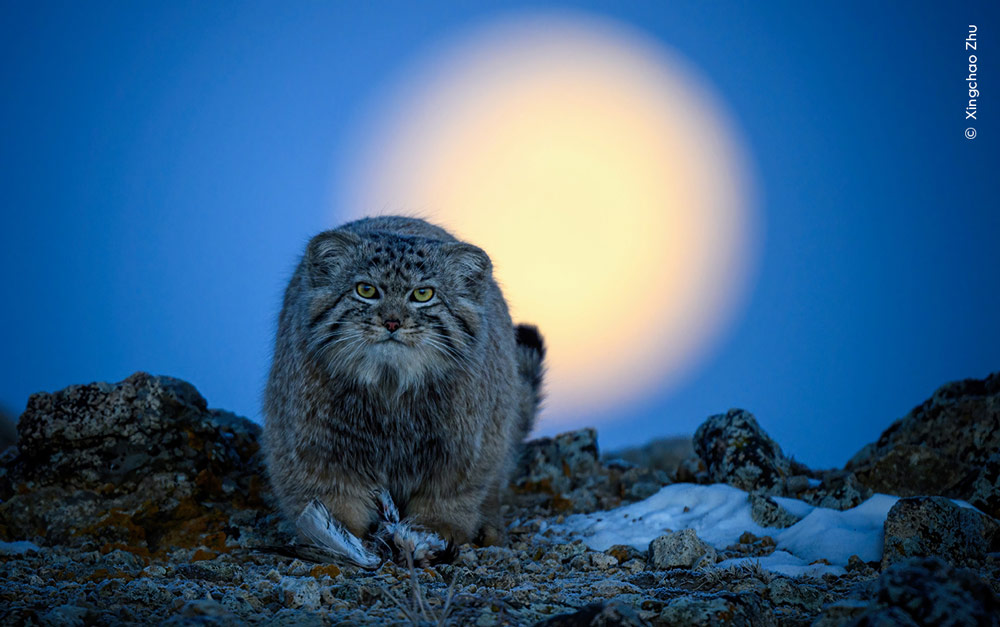
Moonlight Hunter by Xingchao Zhu, China. Highly Commended, Behaviour: Mammals
Xingchao tracked a group of Pallas’s cats on the freezing plateau of Inner Mongolia for several days during the Chinese New Year in February 2023. Shortly before dawn, Xingchao managed to make eye contact with this cat, just as it had caught a small bird.
The thick winter coats of Pallas’s cats help them survive at altitudes up to 5,000 metres (16,400 feet). They avoid larger predators by stealth, and it’s thought that their low, rounded ears allow them to peer over obstacles while remaining hidden.
Location: Hulun Buir, Inner Mongolia, China
Technical details: Nikon Z 9 + 800mm f6.3 lens; 1/160 at f6.3; ISO 1400
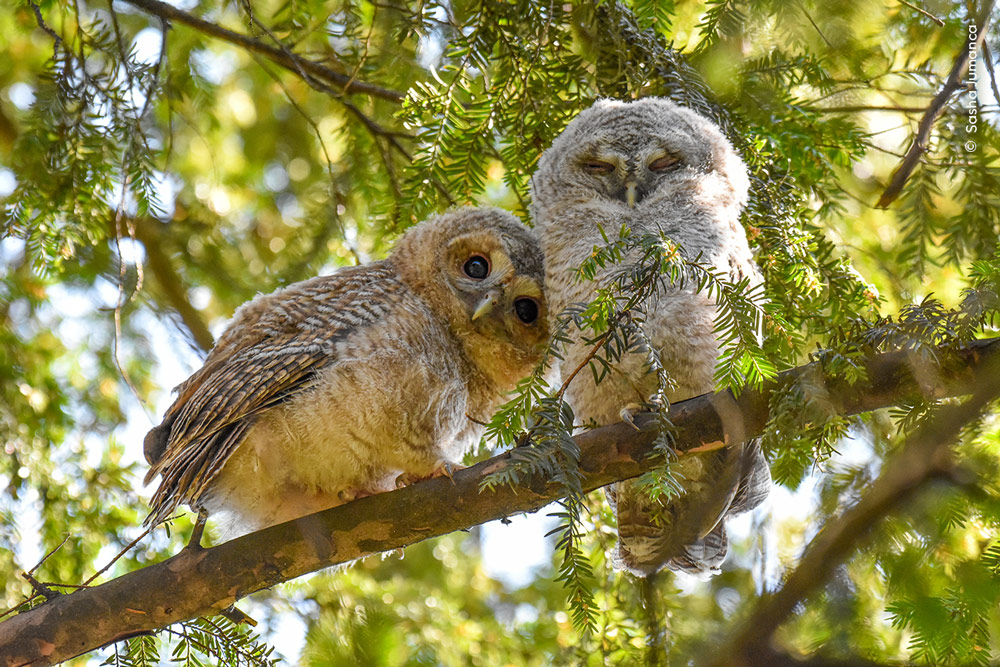
Leaving the Nest by Sasha Jumanca, Germany/Romania. Highly Commended, 10 Years and Under
Sasha had been watching these tawny owlets for several days in a park near his home. He had seen tawny owls in the neighbourhood before but was surprised to discover these so close to the heart of the city.
Owlets leave the nest before they can fly, in a phase known as ‘branching’. They will jump, flutter and climb around branches of nearby trees for several weeks while begging for food from their parents, before they eventually fledge and fly away.
Location: Maximiliansanlagen, Munich, Germany
Technical details: Nikon D7200 + 200–500mm f5.6 lens at 270mm; 1/500 at f6.3; ISO 2200

